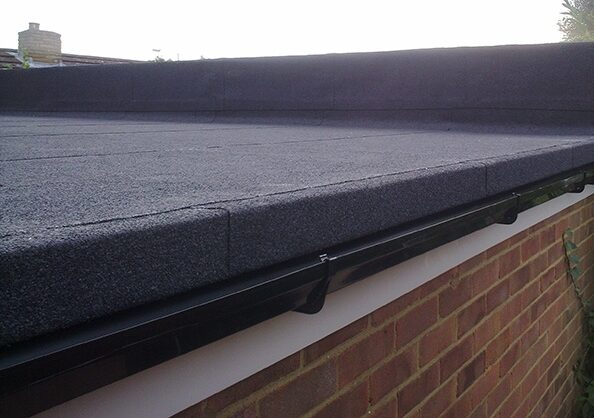The Importance Of Proper Drainage For Flat Roofs: Avoiding Leaks And Water Damage

Flat roofs are becoming an increasingly popular alternative for new structures, mostly as a result of the sleek and contemporary aspect that they create in addition to the enhanced convenience that they offer. They are especially helpful in urban settings, where space is at a premium, because they enable residents to have access to more outdoor space than they would otherwise have. This is because they allow residents to access more outdoor space than they would otherwise have. Because they are more likely to experience water damage and leaks, flat roofs, on the other hand, can be a recipe for disaster if they do not have enough drainage and was not installed by a professional roofer because they are the type of roof that is most likely to have these problems. This piece will provide guidance on how to minimize leaks and other forms of water damage, as well as explain the need of providing enough drainage for flat roofs.
The following are some of the consequences of insufficient drainage:
- Flat roofs that do not have appropriate drainage can lead to a number of problems, ranging from very tiny leaks to serious damage to the structure of the building. The most obvious risk is that water may pool on the roof, which would cause it to sag or perhaps cave in under the increased weight of the liquid if it were allowed to remain there for an extended period of time. If the roof is used as a living space, this can be extremely dangerous because it increases the likelihood that people will become trapped within it if it falls. If the roof falls, it could cause serious injury or even death.
- In addition, water that pools on a flat roof has the potential to seep through cracks and holes in the roofing materials, which can lead to leaks and water damage within the building if it is allowed to remain there for an extended period of time. This can result in the growth of mold and mildew, both of which have the potential to be harmful to one’s health and to cause damage to the building’s structure as well as its appearance. Mold and mildew can also cause structural damage.
It is essential to have sufficient drainage due to the facts that:
- In order to lessen the possibility that one of these threats may materialize, it is essential to check and make sure that flat roofs have sufficient drainage.
- It is absolutely necessary, in order to guarantee that the roof has appropriate drainage, to take the necessary precautions to direct water away from the roof and into a drainage system. This can be done in a variety of ways, and the one that is most appropriate for the building will depend on its specifications.
Methods Of Drainage
- A common technique of drainage is the installation of scuppers, which are apertures in the side of the roof that allow water to flow out. The sides of the roof may contain vents known as scuppers. Scuppers can be installed at predefined spots along the edge of the roof at regular intervals to ensure that water flows away from the structure.
- Internal drains are another common method of drainage. These drains are installed within the roof, and they direct water to a central location where it can be collected and removed. These drains are showing up in more and more homes recently. Internal drains are particularly useful for larger buildings because, in comparison to exterior drains, they are able to handle a greater volume of water. This makes them an ideal choice for drainage.
- The third and last form of drainage is the utilization of a roof that contains a slope. This particular style of roof is built in such a way as to direct water toward a certain area of the surface of the roof, where it can be collected and carried away from the building. Because it permits adequate drainage without the requirement that extra drainage systems be erected, this method is especially advantageous for structures that have a restricted amount of area because it reduces the risk of water damage caused by flooding.
The Value Of Preventative And Regular Maintenance
- Even if there is adequate drainage, flat roofs still need to have routine maintenance performed on them so that they can remain in good shape. This will ensure that the roofs have a longer lifespan. This requires regular cleaning to remove debris and prevent the accumulation of mold and mildew, as well as regular inspections to check for signs of damage or wear and tear on a regular basis. In addition, this involves regular cleaning to remove debris and prevent the accumulation of mold and mildew.
- In addition to this, it is essential to check that the drainage system is operating correctly and to make immediate repairs to any obstructions or damage that may have occurred. Checking and repairing any damage or obstruction that may have occurred is an absolute necessity. It is possible to save money on costly repairs in the future by performing preventative maintenance on the roof, which can also help to extend the roof’s usable life.
Conclusion
However, if they do not have sufficient drainage, flat roofs are more likely to sustain water damage and leaks. Flat roofs are a popular choice for modern buildings because of their versatility and aesthetic appeal. If flat roofs are correctly drained and regular maintenance is performed on both the roof and the drainage system, it is feasible to avoid the risks described above and to make certain that the roof will continue to be in good condition for a significant number of years in the future.
Reach out to us and our team of professionals now to handle your roofing services at 118-35 Queens Blvd Forest Hills, NY 11375 (718) 414-6067 https://www.nycrenovators.com
